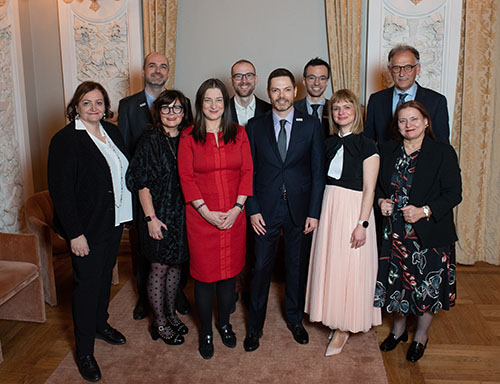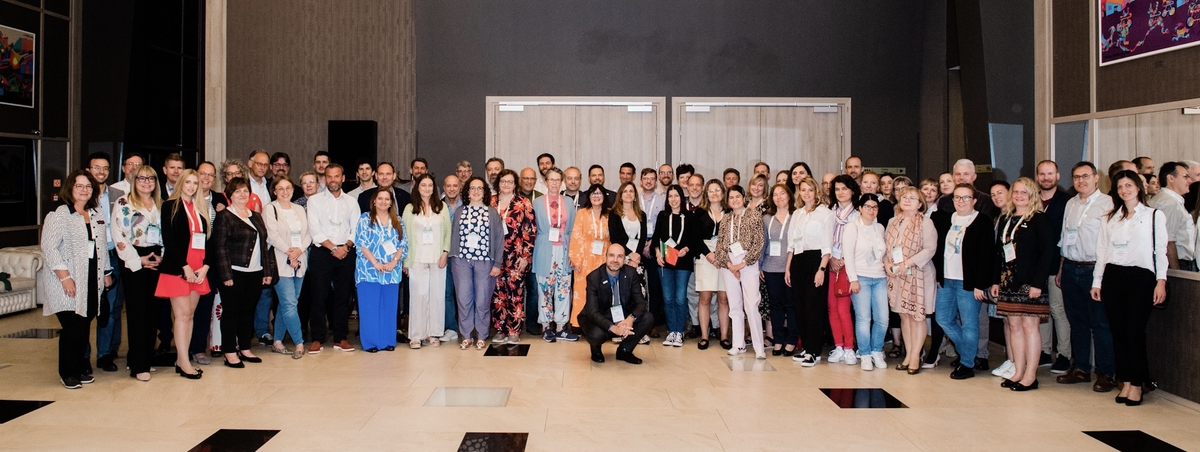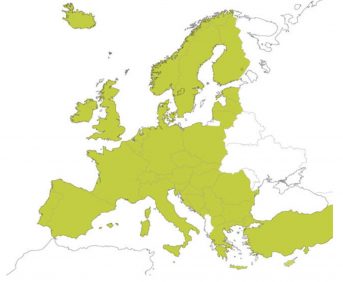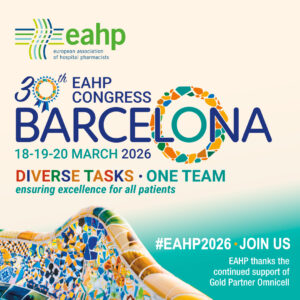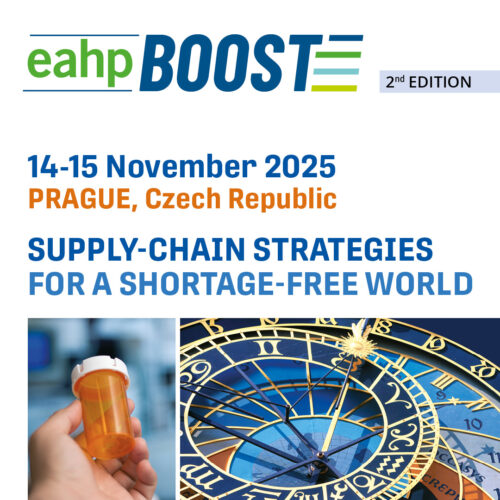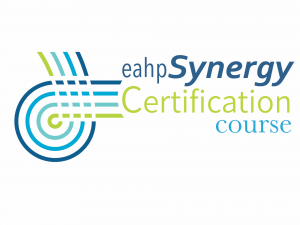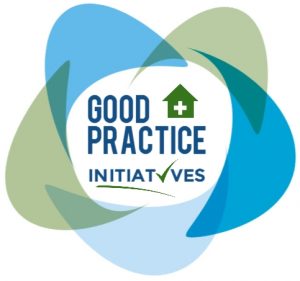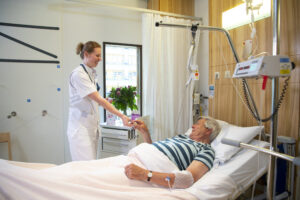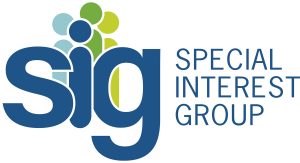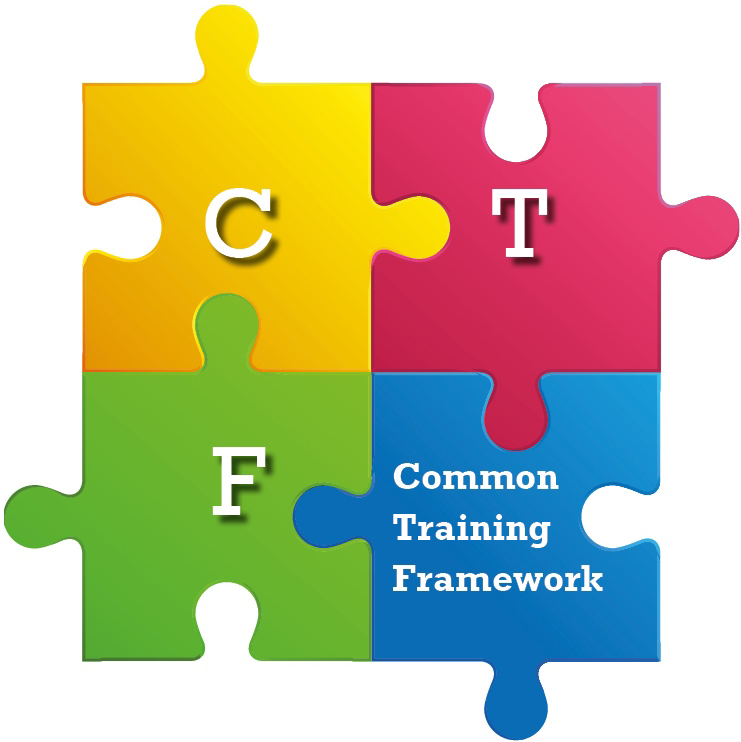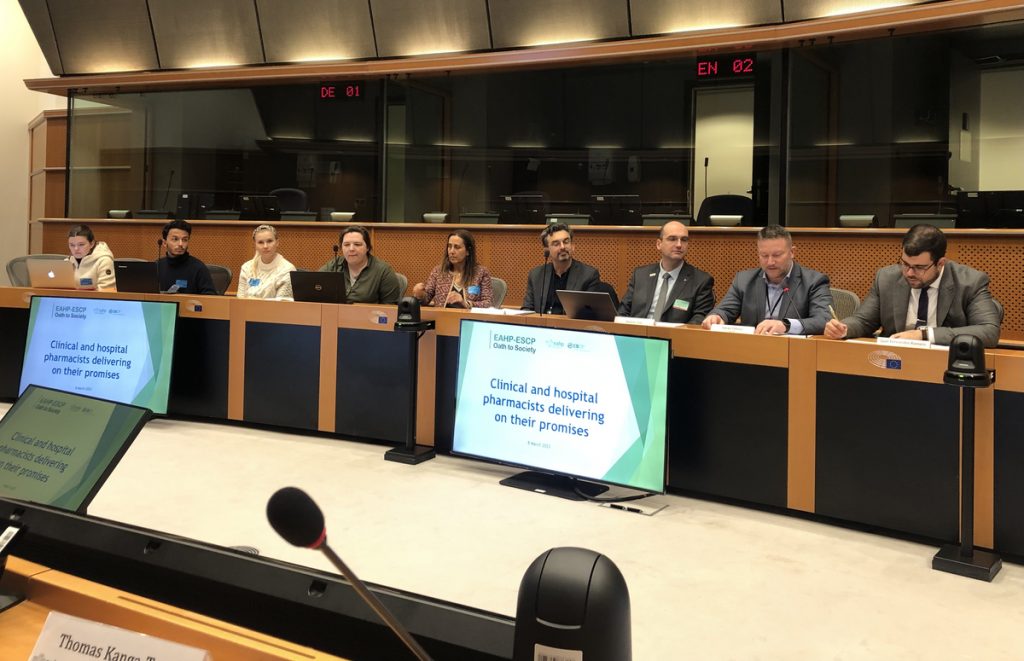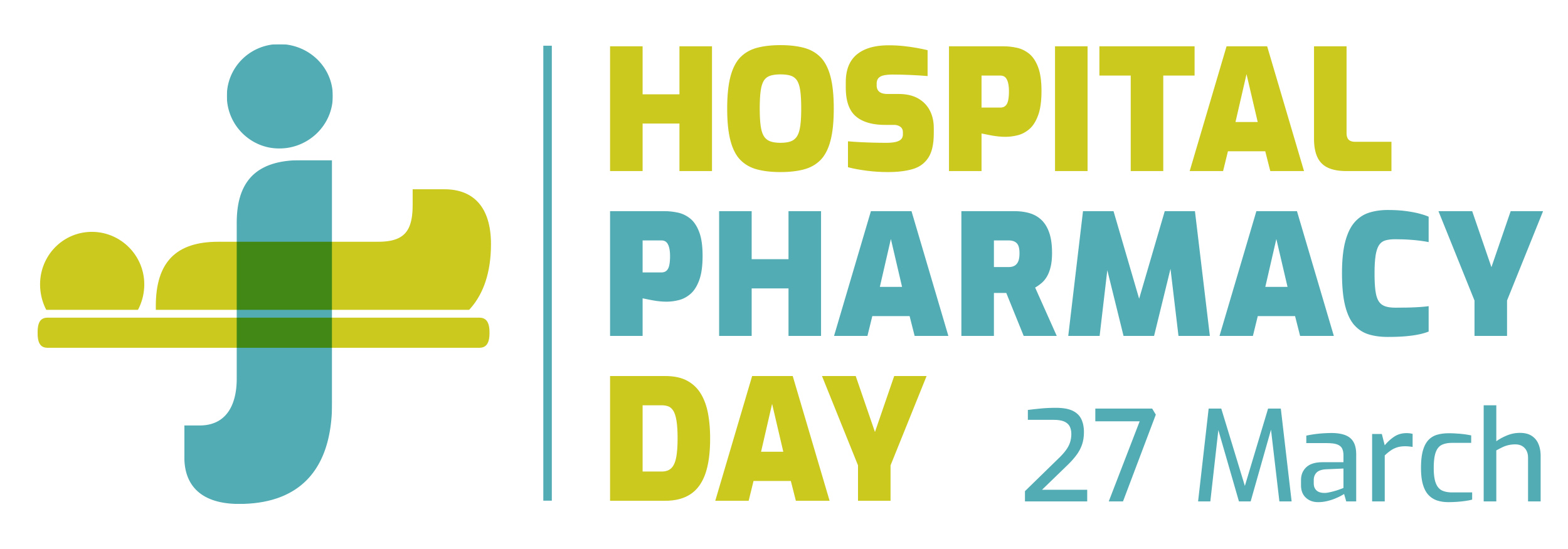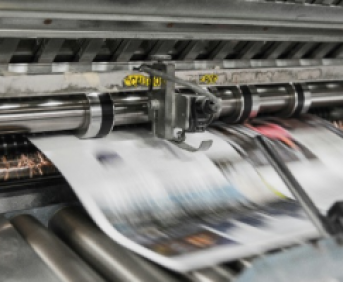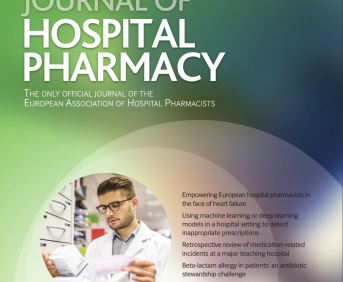IDEA BOX: INVOLVING HOSPITAL PHARMACY ASSISTANTS IN A QUALITY APPROACH
Pdf

European Statement
Patient Safety and Quality Assurance
Author(s)
Adeline HERLIN, Hermine ZIGA, Pauline PAYOT
Why was it done?
The aim is to continuously improve quality and efficiency.
What was done?
In the interests of continuous quality improvement, we have set up a suggestion box in the pharmacy’s unit repackaging sector.
How was it done?
We have set up a suggestion box for technician and pharmacists.
Each person can submit ideas or questions, anonymously or not.
After one month, the box was unpacked. The ideas and queries were analysed and discussed.
What has been achieved?
Eight points were raised.
One point concerns procedures.
The existing procedures on the intranet network are not well known to users. We have provided an easy-to-access binder.
Three points relate to packaging methods (list of products according to packaging method, removal of expired packaged products, mismatch of the Eticonform® label with the blister pack).
A decision tree was made (Euraf®: large quantities, multi-dose vials, magistral formula, small blister packs). The printing of the ledgers indicates the packaged products and their expiry dates. The removal of expired products is done according to the ledgers. A precaution must be taken when editing labels Eticonform® “laboratory” labels. Indeed, the size of the blister packs differs from one laboratory to another.
The fifth point concerns the organization.
Technicians wish a storage area dedicated to repackaged specialties to compensate for stock errors.
After discussion, we did not retain this proposal.
The other point concerns the lack of equipment.
A stool and a ruler were provided.
The penultimate point concerns the use of returns from services in multi-dose vials.
We propose the packaging of small units with expiry dates < 3 months with the Euraf® bagging machine.
Otherwise (e.g. Carbimazole), we propose the packaging of sufficient quantities for 7 days in the vials with pre-printed labels with an expiry date of one week.
The last point concerns the labelling of blisters with desiccant capsule (e.g. Nicorandil).
We offer Eticonform® re-labelling with a statement: USE BY xx/xx/202x (30 days after re-labelling).
What next?
The involvement of the technician team in a proactive approach to risk management is essential. We wanted to harness their practical expertise and energize the team.
The box will be integrated into our current practice.
EXCEPTIONAL HEALTH SITUATIONS: OBSERVATION OF AN IMMERSIVE EXERCISE IN THE HOSPITAL PHARMACY AND FEEDBACK
Pdf

European Statement
Patient Safety and Quality Assurance
Author(s)
Delphine BODEN, Laura RODRIGO, Rachel MAHE, Olivier SELLAL, Maxime PARE, François RONDEAU
Why was it done?
The main objective was to test the activation of our Pharmacy-Sterilization-Operational-Unit (PS-OU), established in December 2022, and to work on its interaction with the others OU of the different hospital services. The second aim was to continue the training of pharmaceutical teams on exceptional health situations (EHS).
What was done?
In March 2024, our hospital pharmacy (HP) took part in an inter-departmental exercise based on the scenario of managing a massive influx of polytrauma victims at our hospital. The quick engagement of mobile medical units and sterilization department, dependent on the HP, is indeed a key element in the optimal care of victims, whether in hospital or pre-hospital.
How was it done?
Two interns and one pharmacy technician, with an analysis framework, were in attendance as observers through the exercise. During the PS-OU activation, various points were observed: global crisis management, task assignment and communication between the members, data centralization and communication with the others OU, efficiency and speed of response to problems… A feedback questionnaire was then sent to the 9 main players (PS-OU members, on-call pharmacist…). Intra-HP and inter-departmental feedback were provided immediately, then a posteriori.
What has been achieved?
For 3 hours, our HP had activated its OU to provide the best possible response to this exercise. The observation of this exercise pointed out the rapid activation and efficiency of the PS-OU (by the on-call pharmacist, on the order of the head of department), so a great intern and extern communication. Areas for improvement were raised, such as the optimization of available tools. 89% of players answered the feedback questionnaire. The communication was considered operational and the PS-OU essential by all the respondents. They also feel that this type of exercise is needed (75%) and helps prepare them for EHS (88%).
What next?
Aims of this exercise were achieved. Preparing, hosting and then analyzing this kind of exercise, although seemingly time-consuming, enables us to validate and, where required, consolidate the intended organization for EHS. These results also strengthen our determination to pursue our annual exercise program. Shortly, an exercise with the supply members of our PS-OU will be organized, in order to train the less experienced members as well.
IMPLEMENTATION OF A CRITICALITY TOOL FOR MEDICAL DEVICES IN A UNIVERSITY HOSPITAL
European Statement
Selection, Procurement and Distribution
Author(s)
C.ALINOVI, J.ZAMPA, D.PECANI
Toulouse University Hospital, FRANCE, Toulouse
Why was it done?
To set up tools to better manage medical device (MD) supply shortages, given the significant increase in the number of shortages in recent years.
What was done?
To better manage MD supply shortages in hospitals, a score has been developed to classify devices by their criticality during supply disruptions. This score considers various factors, such as : number of hospital departments using the product, average daily consumption rate, single-use vs. reusable nature of the product or Availability of alternatives.
How was it done?
A set of criteria and their interrelations were tested to establish a criticality score that categorizes MD into three levels : ‘supercritical’, ‘critical’, and ‘non-critical’. These categories reflect the potential impact on patient care in the event of a shortage. Thresholds, such as the daily consumption rate, were particularly important in defining this score.
What has been achieved?
To validate the scoring method, 33 combinations of criteria and 1,257 threshold variations were tested on a sample of 66 products. These products had previously been rated by expert pharmacists for criticality. Sensitivity and specificity calculations were used to compare the test results with expert evaluations. After testing, three combinations achieved the desired accuracy, and one of these was selected.
The final scoring method was applied to 764 MD in stock at the hospital, identifying 44 as ‘supercritical’. The security storage thresholds were increased for these 44 MD so that they would be less affected in the event of a shortage, and are MD targeted during order delays, so that they can be relaunched as a priority.
What next?
A similar scoring system will be developed for MD managed in non-stock mode to classify the most critical items in the event of a supply shortage.
ANALYTICAL CONTROL OF INJECTABLE PREPARATIONS: TAKE THE TIME TO ANALYZE YOUR ACTIVITY
Pdf

European Statement
Production and Compounding
Author(s)
Guillaume BOUGUEON1,2 ; Mélissa WANG1 ; Jean-Marc Bernadou1, Maîté Sangnier 1, Aude BERRONEAU1
1 Pharmaceutical Technology Department, Bordeaux University Hospital, Avenue de Magellan, 33604 Pessac, France
2 ARNA Laboratoire ChemBioPharm U1212 INSERM – UMR 5320 CNRS, Université de Bordeaux, France
Why was it done?
We work within a university hospital, in an injectable drug production unit. We produce around 55,000 preparations a year, and ten years ago decided to implement analytical control (identification and dosing) (i.e. HPLC then followed by UV-Raman spectrophotometry (QCRX®)) as a post-process control method. To date, around one hundred assays are carried out daily (representing 50% of preparations produced), and some thirty different active substances are analyzed.
For the past 4 years, a monthly meeting has been devoted to monitoring the compliance of analytical assays for our preparations.
What was done?
We felt it was essential to take a step back from our control activity, to enable us to monitor and analyze assay compliance in detail, to distinguish between preparation errors and errors linked to control equipment, and to detect upstream any deviations in assay methods or material damage.
How was it done?
Monthly one-hour meetings have been set up. These multidisciplinary meetings are attended by 6 people, including senior and student pharmacists, pharmacy technician and a laboratory technician.
During these meetings, the following are presented: the number of assays and their nature (1st assay or 2nd assay following a 2nd sample); the number of non-compliant assays (outside the limit of +/- 15% of the target concentration), the overall compliance rate; an analysis of rejected and destroyed preparations, with an investigation into the causes of non-compliance.
Corrective action may then be taken: early maintenance of equipment, quarantine of analytical methods and research into the causes of drift, implementation of new dosing methods. Feedback is then given to the whole team.
What has been achieved?
These monthly meetings have enabled us to anticipate analytical drifts and reinforce our team’s compliance to this type of control. They also enable us to limit the downtime of dosing methods and the need for double visual checks, a potential source of errors.
What next?
The aim is to eventually increase the proportion of analytical control to over 50% of preparations produced. This will involve the introduction of new dosing methods for preparations usually controlled by double visual inspection, and the acquisition of additional equipment
EXPREM PROJECT: TRANSFORMING THE PHARMACEUTICAL EXPERIENCE FOR MULTIPLE SCLEROSIS PATIENTS
Pdf

European Statement
Clinical Pharmacy Services
Author(s)
Ranz Ortega P; Martín Barbero ML; Escudero Vilaplana V; Lobato Matilla E; Carrillo Burdallo A; Del Barrio Buesa S; Herranz Alonso A; Sanjurjo Sáez M.
Why was it done?
The EXPREM project aimed to enhance the patient experience for individuals with Multiple Sclerosis (MS) undergoing pharmacotherapeutic follow-up at our hospital.The project involved designing a Patient Journey Map,conducting patient interviews at key touchpoints,and identifying strategies to improve service quality and patient satisfaction.
What was done?
Due to the chronic and complex nature of MS,patients often fase challenges throughout their healthcare journey.The fluctuating symptoms and long-term treatment regimens require frequent interactions with healthcare providers,making the patient experience a critical component of disease management.This project aimed to identify gaps in pharmaceutical care,improve service efficiency,and create a more patient-centered healthcare environment.
How was it done?
The project was conducted in five phases from January-April 2024:
1.Defining the pharmaceutical care process:a detailed map was designed to outline the pharmaceutical care process,including:before arriving at the pharmacy service(PS), patient visit and post-visit
2.Patient Interviews:three MS patients receiving treatment—one newly diagnosed,one with stable chronic treatment,and one with a recent medication change—were interviewed by a pharmacist in semi-structured,open-ended conversations to capture their perceptions and experiences with the Pharmacy Service
3.Direct Observation(SAFARI Method):the pharmacist working group simulated the patient experience to understand what patient hear,see and feel during their journey, identifying areas for improvement in the facility
4.Designing the Patient Journey Map:information from interviews and observations was used to create the Patient Journey Map,highlighting key areas for enhancement
5.Proposals for Improvement:based on the findings,specific actions were proposed to improve the patient experience
What has been achieved?
The project identified areas for improvement, such as:
Before arriving at PS
•The need for a digital appointment management system to reduce waiting times and and improve medication dispensing efficiency.
•Improvements in the physical infrastructure ensuring privacy,better signage,accessible facilities and developing health education programs,such as audiovisual health material for waiting times.
Patient visit and follow-up
•Expanding the use of health apps,videoconsultation to improve real-time communication and ensure the efficacy and safety of medication at home
•Home medication dispensing to save time and reduce costs for patients
What next?
The methodology will be shared with other pharmacy services for broader implementation and the impact of these improvements on patient satisfaction and health outcomes will be systematically evaluated
Development of a hospital pharmacist led re-evaluation of medication errors
Pdf

European Statement
Patient Safety and Quality Assurance
Why was it done?
All errors, whether involving medication or not, are required to be reported and classified in the hospital reporting system. However, the system is poorly adapted for medication management and lacks the relevant terms. This results in the same type of error being classified in various ways, making systematic quality improvement difficult. A pilot study confirmed the system’s shortcomings, after which a new medication management process was developed and evaluated.
What was done?
The existing process for classifying medication errors was supplemented with a new process in which hospital pharmacists reclassified medication errors detected in the reporting system. The reclassification was based on a predefined medication management process.
How was it done?
A medication management process was developed in collaboration with specialist nurses and in accordance with applicable regulations and policies. The process consisted of the following activities: 1) Prescription, 2) Ordering/Delivery, 3) Storage/Narcotics Control, 4) Preparation, 5) Handover/Administration, 6) Medicines information in transitions of care, 7) Follow-up of treatment, and 8) Miscellaneous. The process was validated by having four hospital pharmacists independently classify 176 medication errors. Consistency in the assessment was evaluated, and the process was corrected as needed. All medication errors classified as medication-related in 2022 or containing the word “medication” in free text were thereafter exported from the reporting tool to Microsoft Excel and then into a data processing and performance monitoring tool for further analysis.
What has been achieved?
A total of 756 medication errors were identified in the reporting tool, distributed across 65 different activities. Hospital pharmacists identified an additional 305 errors through free-text searches that had not been reported as medication-related. A total of 1,061 medication errors (756+305) were reclassified and grouped into eight activities. The highest risk of errors was associated with the preparation (19%), followed by storage/narcotics control (18%), and prescription (17%). The new process, involving hospital pharmacists in classification, creates conditions for a more systematic approach to medication errors. The pilot project was presented at the hospital’s themed day for World Patient Safety Day 2022.
What next?
Discussions have been initiated with system developers to improve the reporting tool. Discussions with hospital management will be initiated with the goal of creating a structure in which hospital pharmacists have an active role in the hospital’s work on patient safety related to medication.
An algorithm for the process of selecting pharmaceutical companies in a pharmacy department
Pdf

European Statement
Clinical Pharmacy Services
Author(s)
Moisés Couñago-Fernández, Marisol Samartín-Ucha, Ana María Regueira-Arcay, Sonia González-Costas, María Alfonsín-Lara, Paula Prado-Montes, Iván Agra-Blanco, Elena Cerdeira-Regueira, Noemí Martínez-López de Castro
Why was it done?
When a new pharmaceutical product should be introduced in a hospital, a multitude of factors must be considered in order to choose a specific brand. A lack of uniformity in the criteria for the selection of new medicines has been detected. To avoid selection errors or arbitrary decisions, a selection structured algorithm was developed using quality tools according to management quality system ISO 9001-2015.
What was done?
To ensure that the process of selecting from several pharmaceutical companies fulfil the requirements of quality and lower cost, a decision-making process for these purchases was designed, through a structured method for the evaluation of new pharmaceutical products based on standardised evaluation criteria.
How was it done?
A multidisciplinary group was created focused on making decisions about criteria. All stakeholders were represented (management pharmacist, quality experts, management assistant and pharmacy director). Also, a survey was given to different specialist pharmacists to complete the criteria. Second, criteria were categorised according to their importance or potential impact in pharmacy practice or patient.
What has been achieved?
The algorithm took into account aspects related to: a)pharmaceutical company and b)aspects related to the pharmaceutical product. Each of these aspects is valued as a percentage.
a)Pharmaceutical company: 40% of the score was based on not having a repeated history of stock-outs, 45% on the evaluation of the provider according to an internal file based on incidences registered, and 15% if the provider was already a known supplier.
b)Pharmaceutical product: 50% was based on the cost of the medicine, 15% unit dose presentation (if applicable), 10% expiry conditions of the medicine, 5% allergens, 5% if it was presented in a pre-filled pen (if applicable), 5% if it could be stored at room temperature, 5% if the drug is supplied in diluted vials (in the case of parenteral medicines) and 5% if it had all the possible indications in the technical data sheet.
This methodology has been used successfully in recent months with the pharmaceutical supplier changes of abiraterone and sugammadex.
What next?
This tool will be used for all changes of medicine brands and new drugs purchased in the hospital, enabling uniformity in the purchasing process for all new drugs.
Use of an integrated research management system on a clinical trials unit of a Portuguese hospital
European Statement
Education and Research
Why was it done?
The evaluation of the use of the software was based on a retrospective analysis of all clinical trials introduced since 2020 and the interpretation of the results of a survey (carried out from July to August 2023) aimed at Clinical Research Associates (CRAs)
What was done?
Evaluation of the use of an Integrated Research Management System based on a retrospective analysis of all clinical trials introduced into the software since 2020.
How was it done?
The evaluation of the use of the software was based on a retrospective analysis of all clinical trials introduced since 2020 and the interpretation of the results of a survey (carried out from July to August 2023) aimed at Clinical Research Associates (CRAs)
What has been achieved?
With the introduction of an integrated management system as a registration platform of investigational product receipt, dispensing and return, were introduced into the software 204 clinical trials.
Since its implementation in 2020, the integrated system has been authorised by the sponsor as a registration platform in 55 clinical trials, corresponding to 79% of clinical trials initiated since that date.
The clinical trials Unit grants remote access to the clinical trials information to CRAs through the filling out of a declaration. Since the adoption of this system, remote access to the platform has been granted to 35 CRAs.
According to the survey distributed between July and August:
-85.7% of CRAs use the system in their monitoring work.
-The use of System has been exclusively approved to replace paper records in 88.9% of active clinical trials (with the exception of receipt confirmation via IWRS – Interactive Web Response System).
-All the CRAs who answered the questionnaire consider remote access to clinical trial data to be an advantage.
– 77.8% believe that by using the platform the time spent on presential visits has been reduced.
What next?
The use of this type of system is essential to ensure the efficiency of the tasks carried out by research teams. The approval of system by the sponsor allowed a significant reduction of paper records and the CRA’s remote access to the platform has allowed the early detection of errors, as well as a substantial reduction on time spent on presential visits. The CRA’s remote access to the movements associated with the experimental product like temperature records, calibration certificates, CVs (Curriculum Vitae) and GCP’s (Good Clinical Practices). Although use of the platform has been increasing, some sponsors still do not authorise the exclusive use of the system. It is therefore essential to share the platform’s added value in order to change the traditional ways of management of clinical trials information.
Pallet box implementation: a combination of improved working conditions, storage and waste optimisation?
Pdf

European Statement
Selection, Procurement and Distribution
Author(s)
Elisabeth CESAR, Ludivine LECHEVRETEL, Adrien NIERENBERGER, Laurent DIETRICH, Anne FEGER-FALK
Why was it done?
We decided to experiment this new solution on coronarography-packs, which presents the biggest rotation among surgery-packs (5,392 units estimated for 2,023), in order to improve working conditions of logistic workers, decrease musculoskeletal disorders (MSD) and optimise storage.
What was done?
Pallet box have been implemented as a new logistic solution for surgery-packs in our hospital pharmacy on a proposal from one of our biggest suppliers. The aim of this comparative study between 52-pack pallet boxes and the previous storage solution by 4-pack boxes was to assess the potential benefit on handling work, storage, waste and its economic impact.
How was it done?
In order to compare these two solutions, we clocked the time and evaluated the cost of transport from delivery gate to storage room and healthcare-unit order-picking step (from picking up the first pack to cardboard flattening). We also estimated the amount of waste associated.
What has been achieved?
Pallet-boxes enable a 24% room saving (52 pallet-spots yearly (2 pallet-boxes piled on one spot) instead of 68) and a 31% global time saving (22 hours yearly (13h transport + 9h order picking) instead of 32 hours (17h transport + 15h order picking)). Time saving on order picking was 40%: picking step of one pack from a pallet box requires on average 6 seconds whereas 10 seconds were needed from 4-packs-boxes. Yearly 104 pallet-boxes (603 kg of empty cardboards) will be manipulated whereas 1,348 4-pack-boxes (1,213 kg) used to be handled resulting in a 2-fold decrease. Even though pallet-boxes halve cardboard-waste, they represent 1.5 times more wooden-pallets’ waste (104 versus 68). Furthermore the price of coronarography-packs are impacted by a 2% increase representing around 4,100€ yearly which is not balanced by savings on transport or order picking (10h ≈ 150€).
What next?
Logistic workers are unanimously satisfied in implementing pallet-boxes as it facilitates their work on many aspects: pallet transport, order picking, waste disposal. Despite being costlier, a decision has been made to implement pallet-boxes in the long-term in order to improve waste management and working conditions of logistic workers. Our hospital pharmacy is already thinking about extending pallet-boxes to other references in order to assess more precisely their impact on MSD in logistic workers.
A 3-Year transformation of a Belgian clinical trial pharmacy team
Pdf

European Statement
Education and Research
Author(s)
Marie Coenen, Stefanie Goris, Thomas De Rijdt, Isabel Spriet
Why was it done?
These changes were necessitated by the increasing number of (complex) clinical trials conducted at UHL. This Belgian 1995-bed, tertiary care hospital constitutes an attractive setting for clinical trials and a coveted partner for sponsors, due to its specialisation in a wide range of medical fields to treat complex pathologies. Adopting the changing research field whilst ensuring the highest regulatory compliance was challenging.
What was done?
Since 3 years, the clinical trial team of the University Hospitals Leuven (UHL) pharmacy has gone through several metamorphoses. These were realised by introducing an activity based costing (ABC) model enabling financing of staff expansion, extension of the infrastructure, and extensive digitalisation.
How was it done?
In 2016, an ABC-analysis was conducted by the Belgian Association of Hospital Pharmacists to determine the cost of various pharmacy activities within a clinical trial. In 2019, the outcome of the analysis was revised to concur the fast-growing clinical research field.
To affirm the need to apply these updated prices, a retrospective evaluation was performed in 2020 documenting the number of clinical trial protocols, pharmacy staffing and applied prices over the past 4 years.
What has been achieved?
Rapid growth of pharmacy research activities was shown by an increase in the total number of active clinical trial protocols from 964 in 2017 to 1256 in 2020. Until then, quantitative expansion was not followed by qualitative growth since staffing remained steady at 13 full-time equivalents (FTE) and the applied costs were outdated and not cost-effective. To enable this transition, an up-to-date pharmacy budget table was developed based on the latest ABC-analysis and, along with an estimate of future income, approved by the hospital board in 2020. This allowed the pharmacy research staff to be reinforced to 19 FTE and the infrastructure to be extended to integrate extra storage capacity and research dedicated clean rooms. Starting from 2021, the budget table was implemented into practice using computerised support enabling automated billing.
What next?
Future directions include further digitalisation by automating accountability and compounding and focusing on qualitative growth by advancing the role of clinical trial pharmacists into a specialised member of the hospital research development team and of the clinical pharmacy team.
